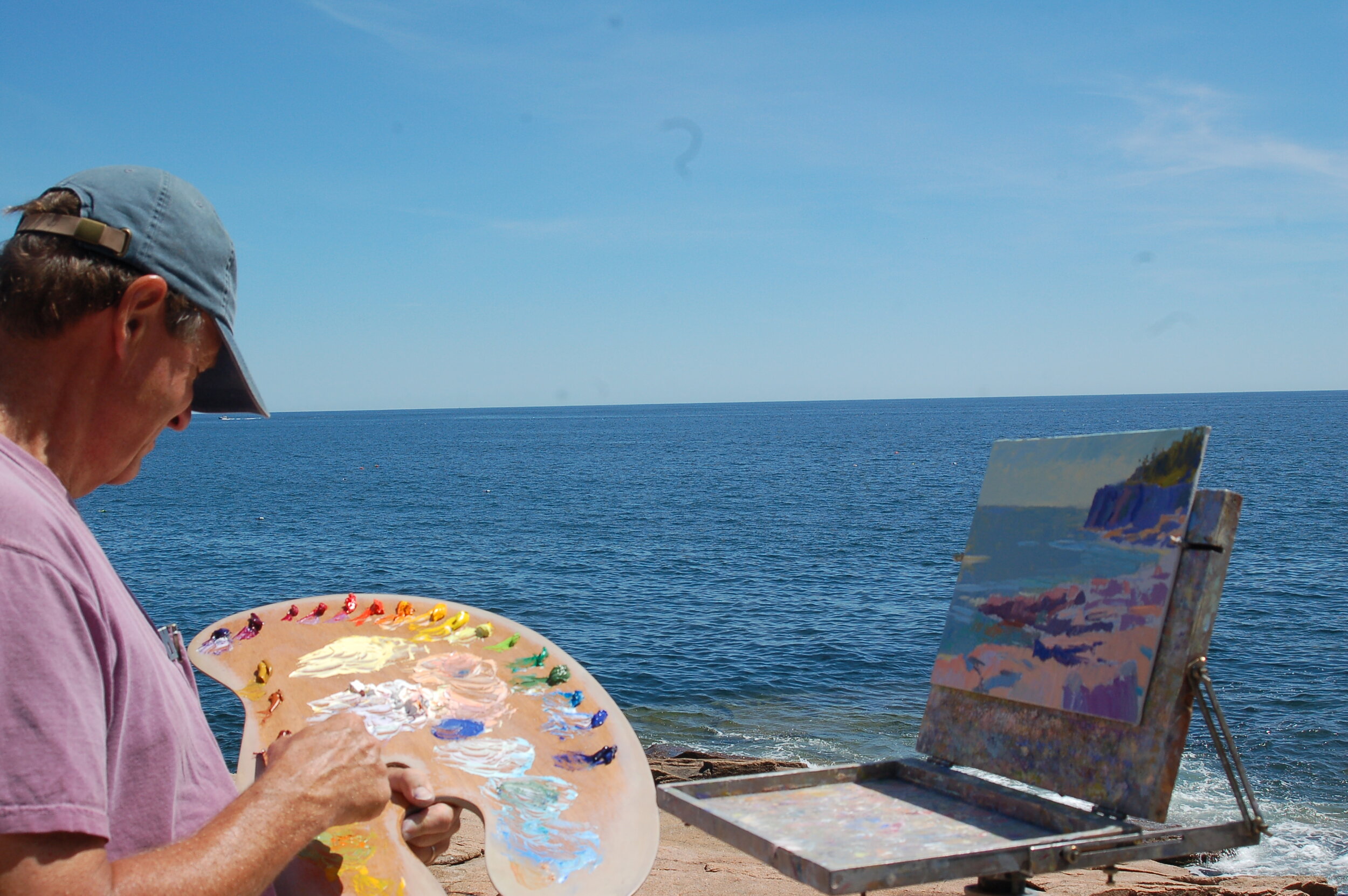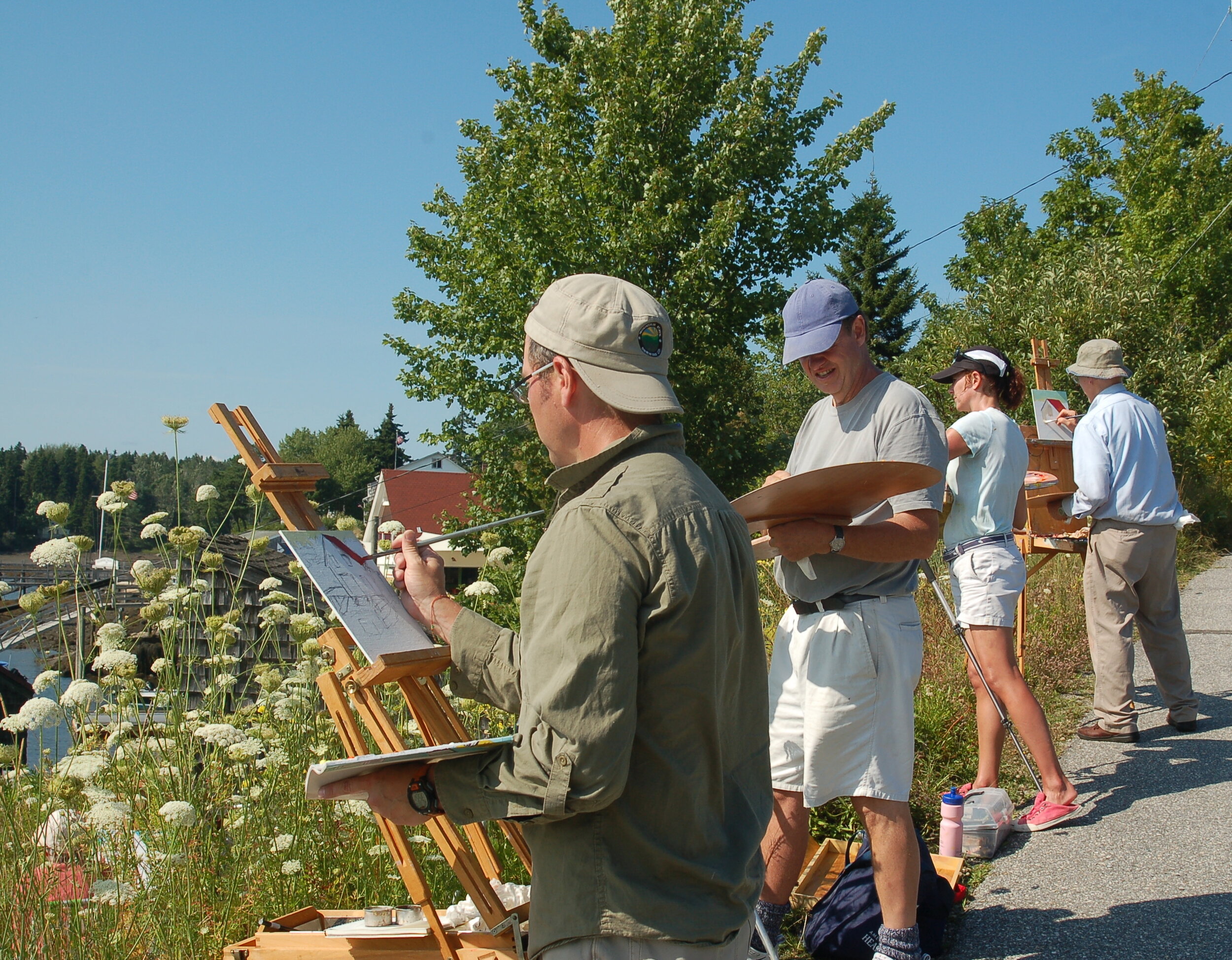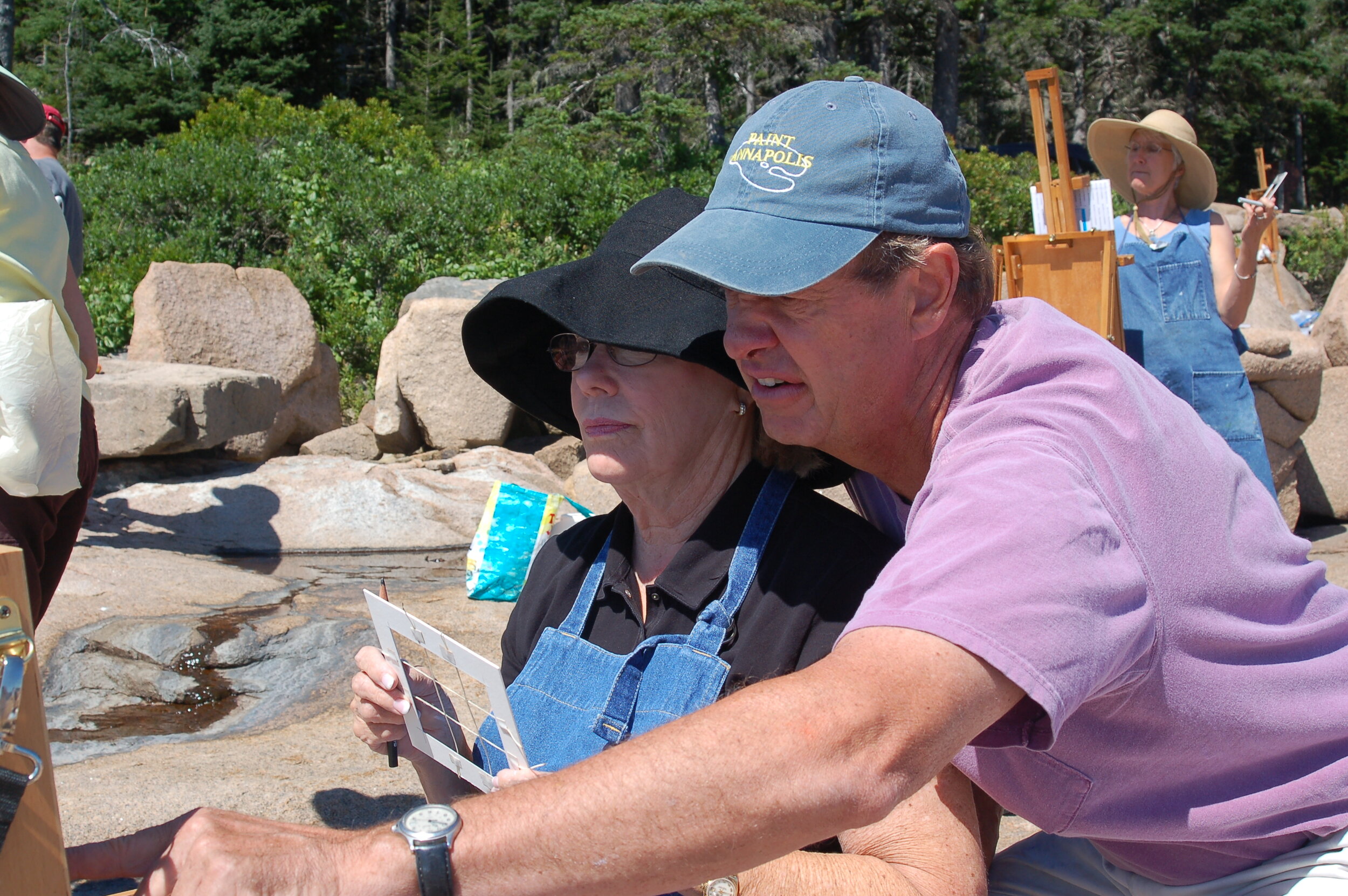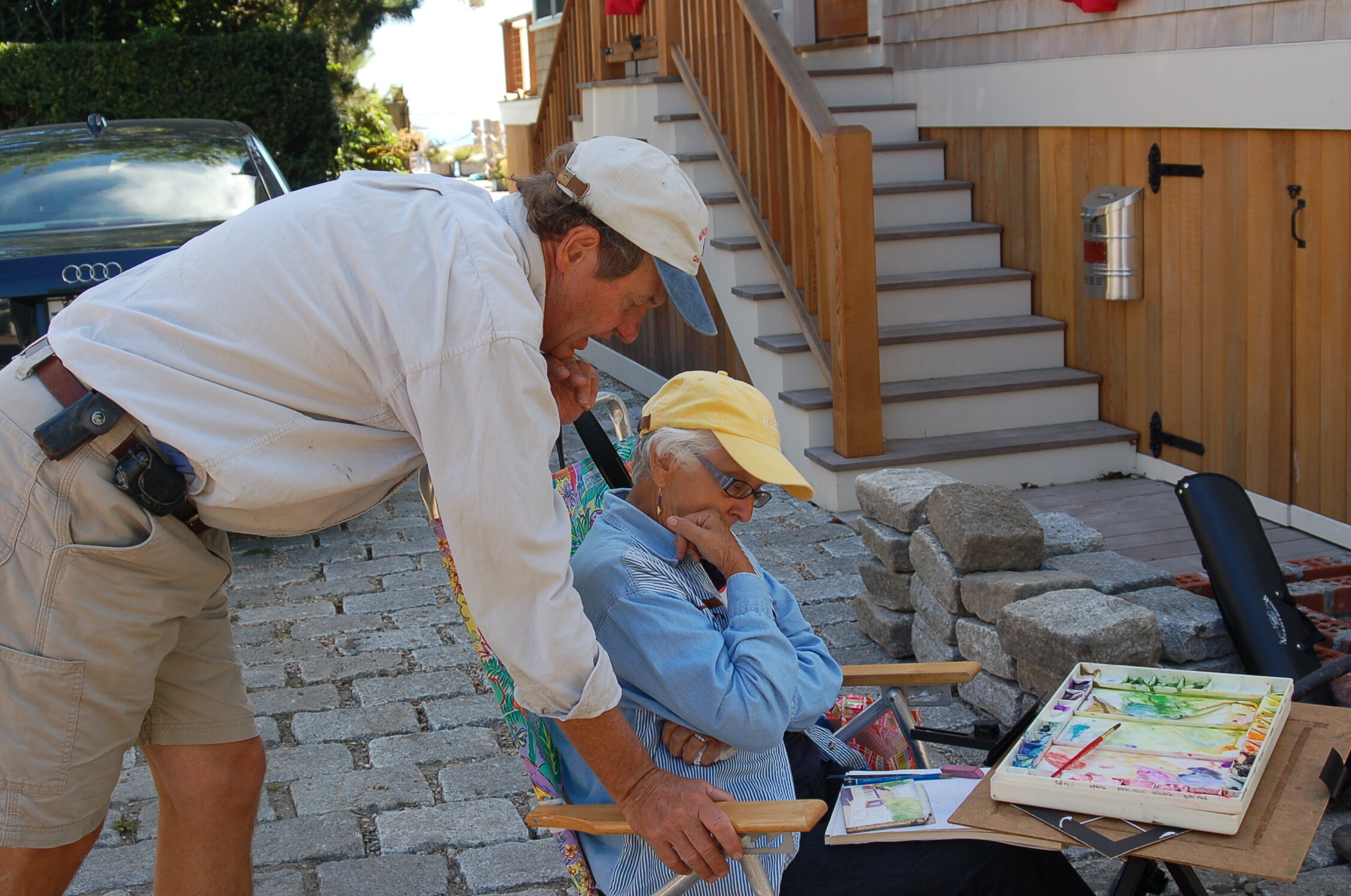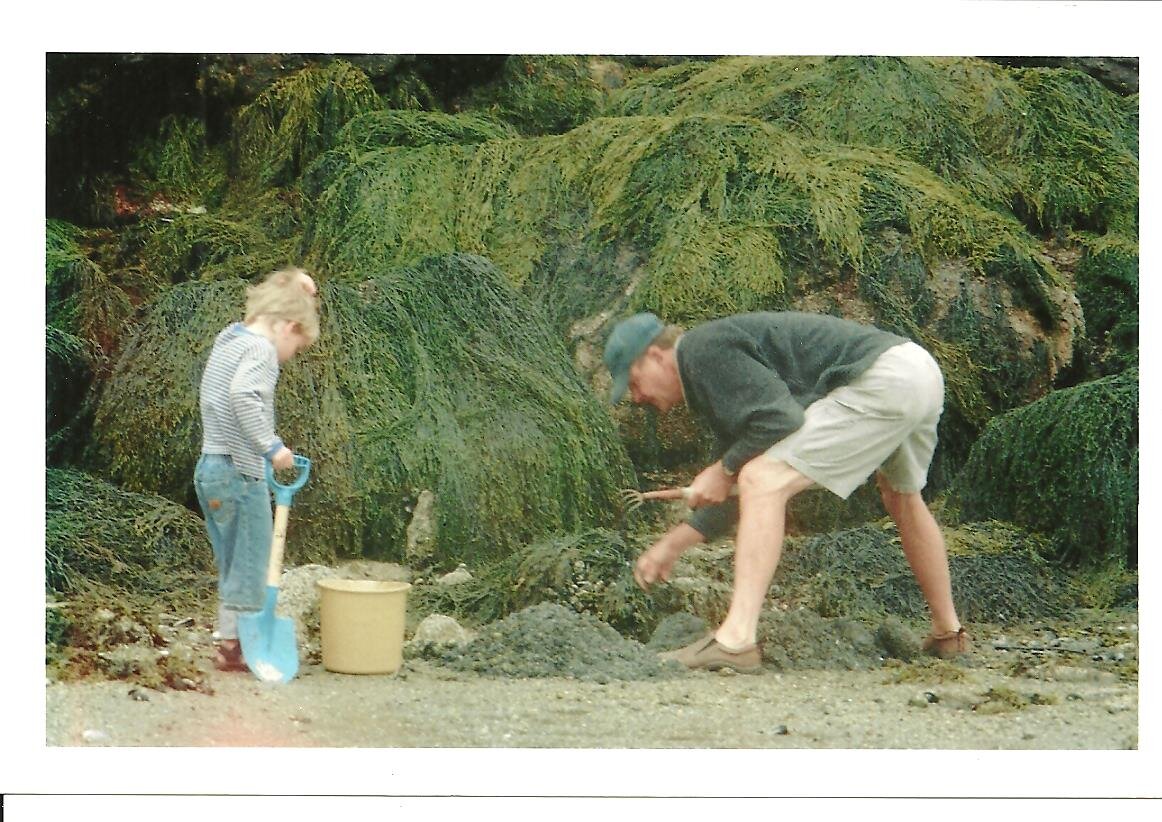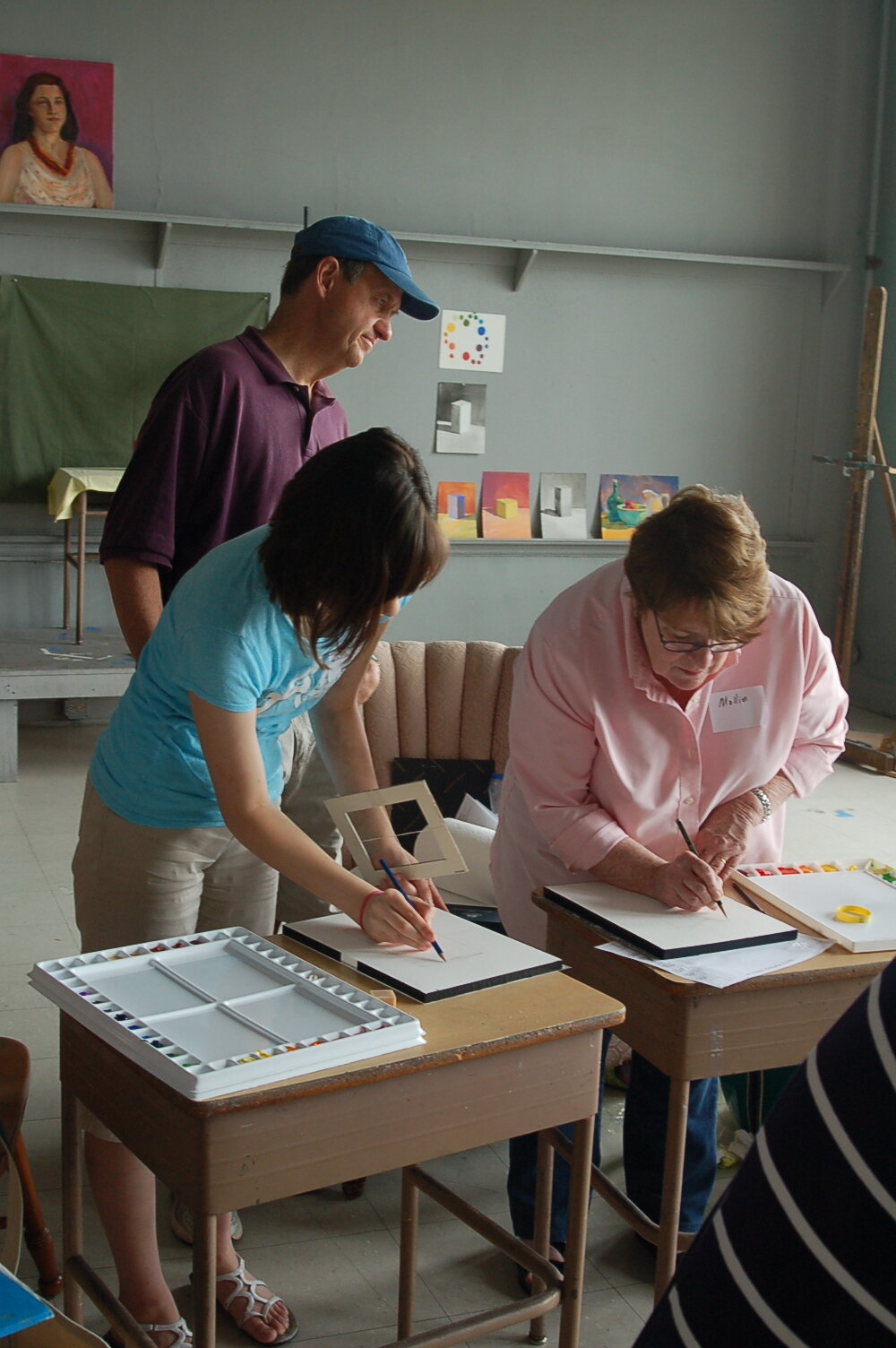Lee Boynton painting in Vermont in below zero weather
My father left an outstanding legacy in the visual arts. He wanted other people to see the light and transform their lives through the pursuit of fine art. He was a Christian man, quietly urging people to look to Christ to find peace and healing. Through compassion and a readiness to laugh, my Dad was a friend and a leader to many in Annapolis and beyond. He was authentically himself from painting in below zero weather in Vermont to always shouting the loudest in church. He stood out unapologetically in his humble pursuit of greatness.
This is what it takes to be a fine art painter. The world has many misconceptions about the artist, something creative people have been battling for generations. You have to go a lot further than just showing up at work. If your purpose entails revealing the truth about nature and the world through your work, and creating a legacy, you have to run twice as far.
The practice of art is a kind of meditation or reflection on the infinite complexity of nature and our world. The more masterful the artist is at representing it, the more his or her hand becomes invisible to the viewer. One time I went to the National Gallery of Art to attend a drawing class with a focus on copying Italian drawings of church interiors. Within moments, I was transformed from a nonchalant viewer into a harried student slaving away to understand complex perspectives. Your ability to see something is not like capturing it on paper or canvas; you have to dissect your subject like a scientist, with an intense amount of visual and mental focus. The average person doesn’t comprehend what goes into a successful work of art because when something looks correct, we don’t question it.
To be a great artist, as my father was, it takes an added dimension — an ability to connect with people’s hearts — to open their eyes and transform their sensibilities. Fine art is like a symphony of color, form and the expression of a heart response to the subject. The creation of fine art is actually the most sincere expression of love and gratitude for life. Believe it or not, there aren’t words for that type of expression. It takes a certain beautiful, finely tuned, combination of qualities and skill to make beautiful art. The making of art, like music, will always have an honored and essential place in the world.


